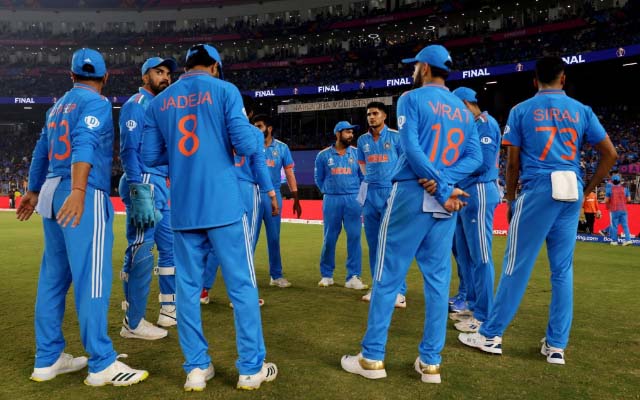
Ian Chappell (Photo Source: Twitter)
In a recent column, former Australian cricketer Ian Chappell proposed a significant amendment to the boundary law, while aiming to inject a much-needed acceleration into the pace of play. Chappell’s suggestion involves signalling boundaries only when the ball makes contact with the boundary rope, dismissing concerns about fielders touching the rope while in contact with the ball. The existing Laws of Cricket dictate that a boundary is granted to the batting side when the ball is grounded beyond the boundary and allowed for the possibility of a fielder touching the rope simultaneously.
Chappell, known for his insightful views, also emphasised the need for cricket administrators to take proactive measures to hasten Test cricket. He advocated for restrictions on on-field meetings between batters during overs, limiting drinks to stipulated breaks except in extreme conditions, and minimising equipment changes. Expressing concern over the burgeoning use of reviews, he questioned the time consumed by teams in the review process and urged for a revaluation of the current system.
“Why aren’t boundaries signalled only for balls that hit the rope rather than allowing pointless replays that look at the whereabouts of a fielder’s feet or hands? The pace of play in Test cricket is abysmal. It’s slowing every day and nothing is being done to improve matters,” Chappell penned his thoughts in a column for ESPNcricinfo.
Chappell’s suggestions might steal the thunder of modern-day cricket
As athleticism on the cricket field continues to reach new heights, the routine sight of players executing slides and dives to prevent the ball from reaching the boundary has become ingrained in the sport. However, this surge in fielding excellence has also given rise to a challenge in swiftly determining boundary instances, especially when fielders are in simultaneous contact with the ball and the rope.
Ian Chappell’s proposed alteration to the boundary law, suggesting that boundaries be signalled only when the ball touches the boundary rope, carries potential merit, particularly in the context of Test cricket. In the longer format, the significance of saving or conceding an extra run might not be as pivotal as in limited-overs cricket. However, implementing such a change would necessitate a substantial overhaul of the existing laws and could potentially diminish the occurrences of breathtaking relay catches and other displays of athletic brilliance permitted by the current boundary regulations.
 IPL 2024 Closing Ceremony Live: Performances, Celebrities, and More
IPL 2024 Closing Ceremony Live: Performances, Celebrities, and More Yuvraj Singh has always said I can become a better bowler than him: Abhishek Sharma
Yuvraj Singh has always said I can become a better bowler than him: Abhishek Sharma Pat Cummins has won the World Cup; he knows how to keep dressing room running: Suresh Raina
Pat Cummins has won the World Cup; he knows how to keep dressing room running: Suresh Raina T20 World Cup 2024: Additional tickets for three India games to go on sale with one week to go for tournament
T20 World Cup 2024: Additional tickets for three India games to go on sale with one week to go for tournament

